What do I need to get a remote job abroad as a Nigerian?
Landing a remote job abroad can feel like an uphill battle, especially when you’re starting from scratch without any tech skills or connections. As someone who successfully navigated this path while living in Nigeria, I’m here to share exactly how I got my first remote job and how you can replicate my approach. This article will give you actionable strategies on how to get a remote job using simple but effective methods — without relying on the usual crowded job boards or having specialized technical skills.
Whether you’re eager to land a remote job within the next month, two, or three, this guide is for you. I will walk you through the steps I took, the mindset shifts that helped, and the practical tools I used to secure remote work opportunities from international clients.

My First Remote Job: A Simple Yet Powerful Story
Before diving into strategies, let me briefly share the story of how I landed my first remote job. I was a total newbie with no prior remote work experience and no technical skills like coding. What I did was straightforward:
- I went to Google and searched for “hiring content writer remote”.
- I scrolled through the search results until I found a job that caught my interest.
- I read the job description, applied, and was invited to write a test article.
- I completed the test, impressed the employer, and was scheduled for an interview.
- The day after the interview, I received a contract offer.
This entire process happened within a few days, showing that sometimes, simplicity and taking action can move the needle faster than you expect.
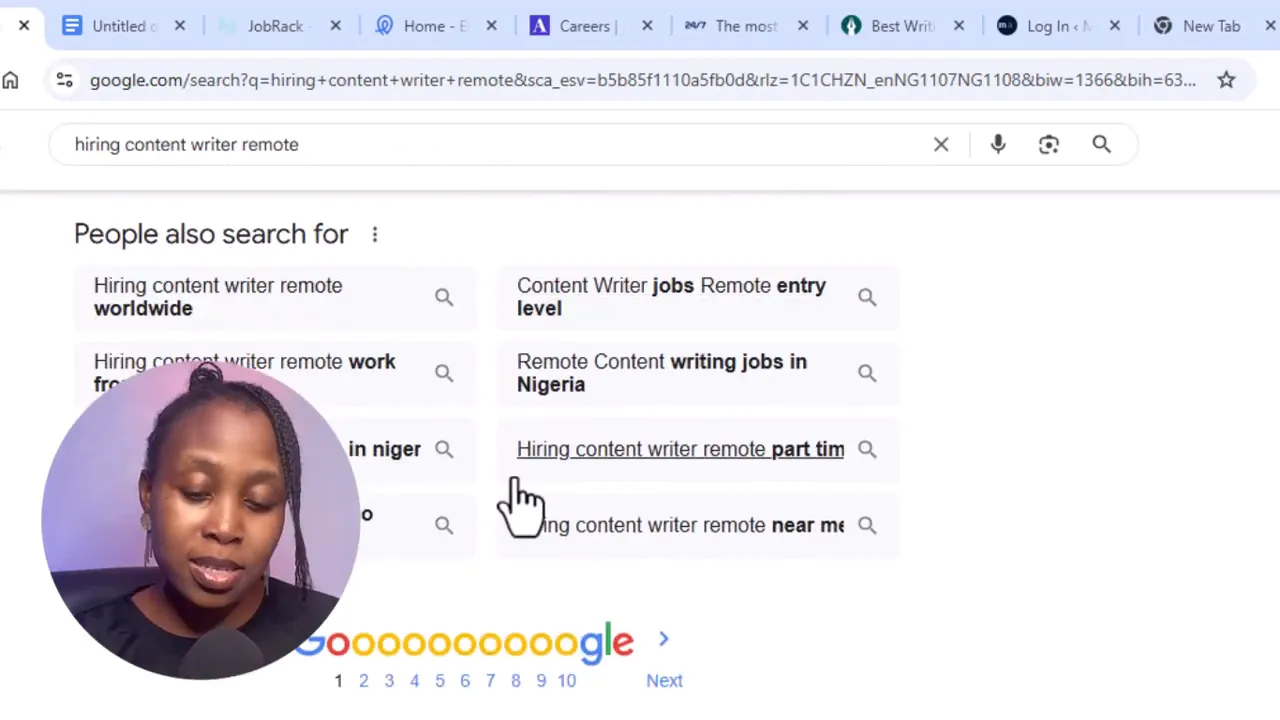
That was how I landed my first remote job, without going through the popular remote job boards that everyone talks about. It was just a matter of using Google effectively and being ready to put in the work.
Why Google is Your Best Friend in the Remote Job Hunt
Many people overlook Google when searching for remote jobs, but it’s an incredibly powerful tool if used strategically. Here’s how you can leverage Google for your job search:
1. Use Specific Keywords to Find Targeted Opportunities
For example, since I’m a content writer, I searched for keywords like “remote content writer jobs” or “hiring content writer remote”. But you don’t have to limit yourself to job titles. You can also search for topics related to your niche, like “how to get a remote job” or “remote work tips”. This helps you identify companies that are actively engaged in remote work or related content.
By exploring these results, you can discover companies that might have career pages with open remote positions or those that you can pitch your services to directly.
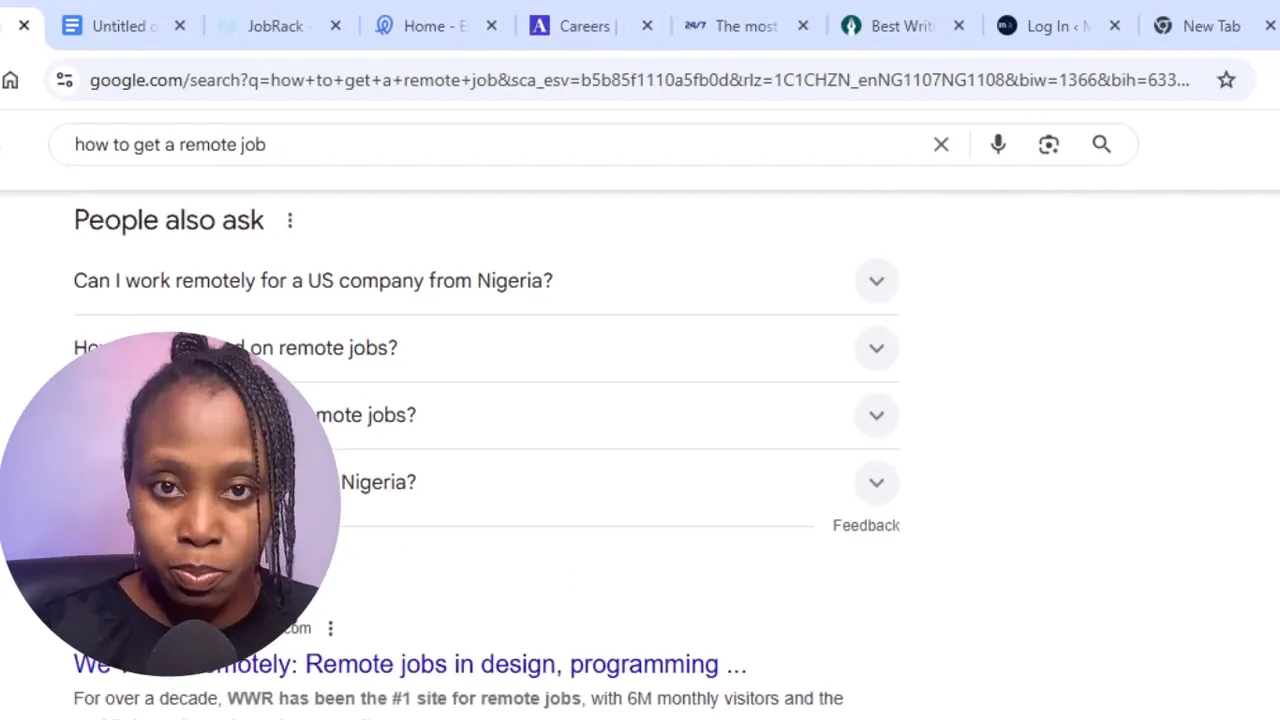
2. Explore Company Career Pages and Pitch Yourself
Not all remote job openings are listed on popular job boards. Many companies post vacancies only on their official websites. After finding companies through Google, visit their career pages to check for remote job openings. If you don’t see any, don’t hesitate to reach out and pitch yourself directly.
For instance, if you’re a content writer and you find a company that writes about remote work, reach out with a personalized message explaining your expertise and how you can add value. This proactive approach can set you apart from thousands of other applicants.
3. Use Google Search Operators to Find Jobs on ATS Platforms
Applicant Tracking Systems (ATS) like Workable, Greenhouse, Lever, and Breezy HR are commonly used by companies to manage job applications. Some jobs posted on these platforms don’t show up on traditional job boards.
By using Google search operators, you can find job listings on these ATS platforms. For example, you can search:
site:workable.com “remote” “content writer”
This search will show you all remote content writer jobs posted on Workable. You can replace workable.com with other ATS domains to find more opportunities.
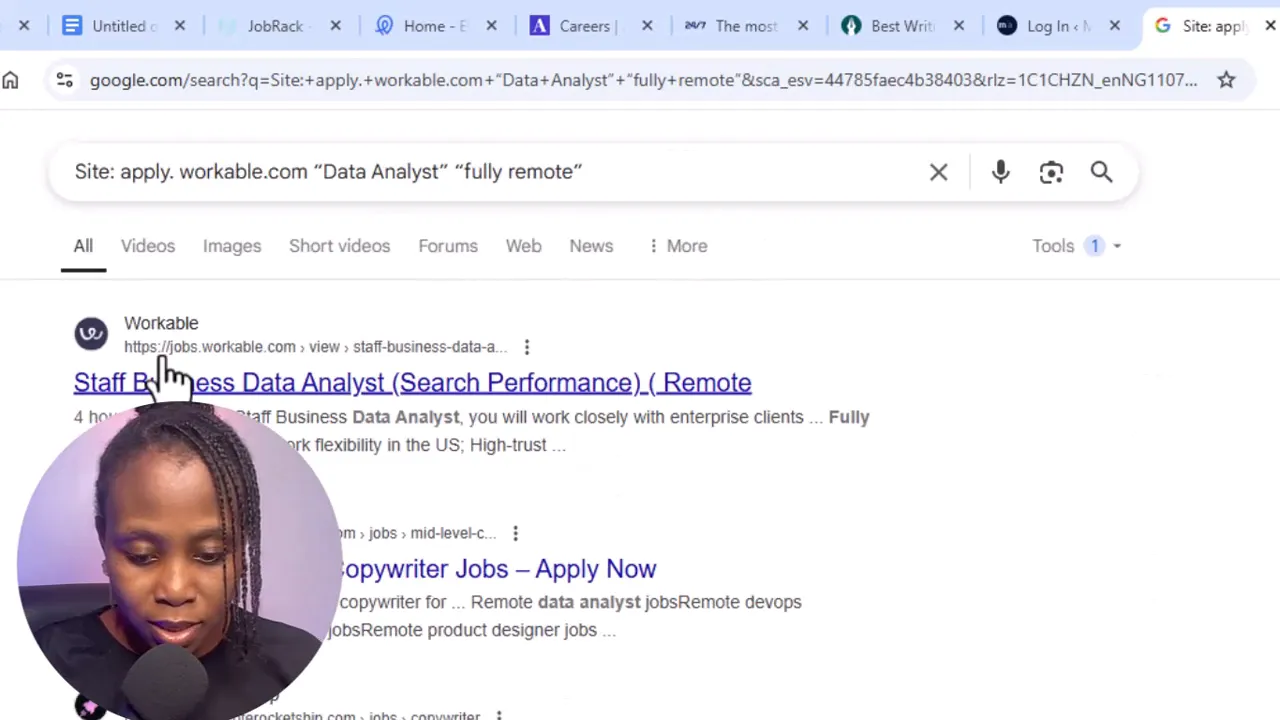
4. Filter Google Results by Date
To find the most recent job openings, use Google’s tools to filter results by date. This ensures you’re applying to fresh opportunities and increases your chances of getting a response.
Simply click on “Tools” below the search bar, then select “Any time” and choose the timeframe you want, like “Past 24 hours” or “Past week.”
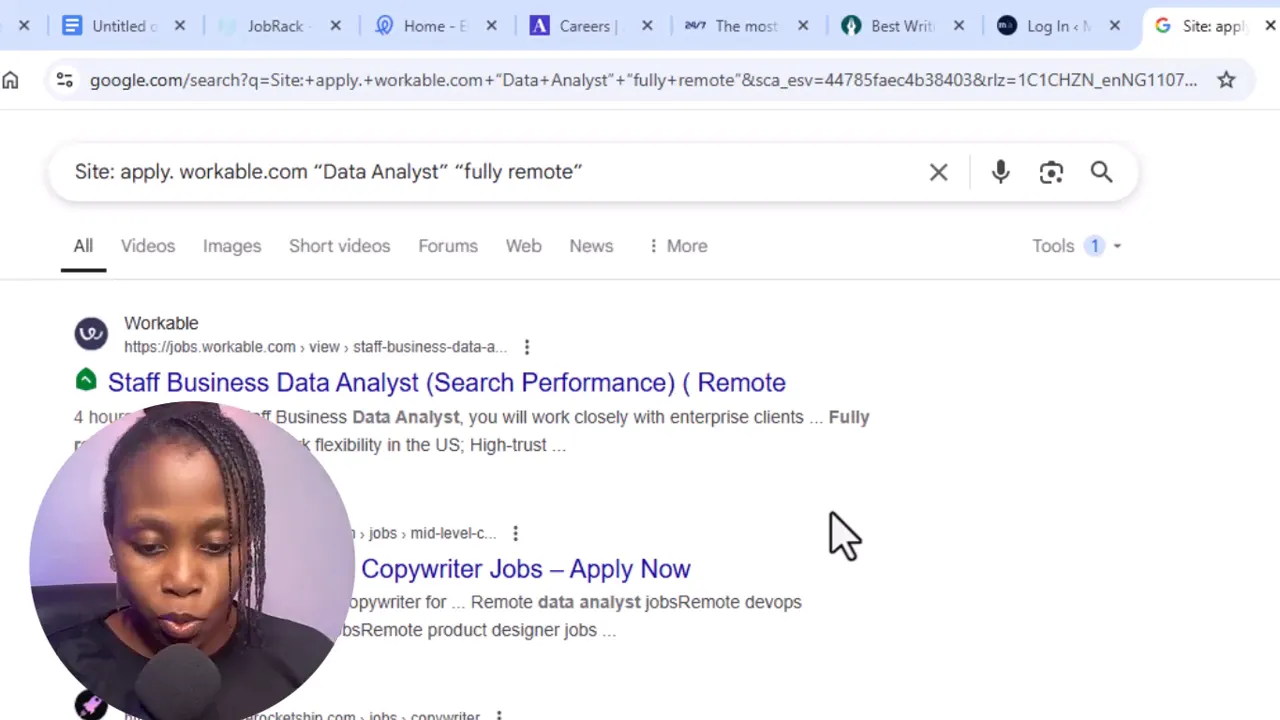
Why You Should Avoid Popular Remote Job Websites
Popular job boards like Glassdoor, Indeed, FlexJobs, and Remote.co are often flooded with thousands of applicants. While legitimate, the competition is fierce, making it harder for newcomers to stand out.
Instead, I recommend focusing your energy on smaller, niche job websites or newer platforms that cater to specific roles or regions. These sites often have less competition and can provide better opportunities for remote work.
Some Niche and Lesser-Known Remote Job Platforms to Explore
- Job Rack: A platform mainly for South Africans and EU residents, but you can still use it to identify companies and reach out directly.
- Europe Remote: Offers a variety of current remote jobs across Europe and worldwide.
- Ashby by HQ: A growing platform with remote job openings in different fields.
- 24/7 VA: Ideal for virtual assistants, with many job listings and agency support.
- best writing jobshttps://bestwriting.com/ and Pro Blogger: Great sites for content writers looking for remote gigs.
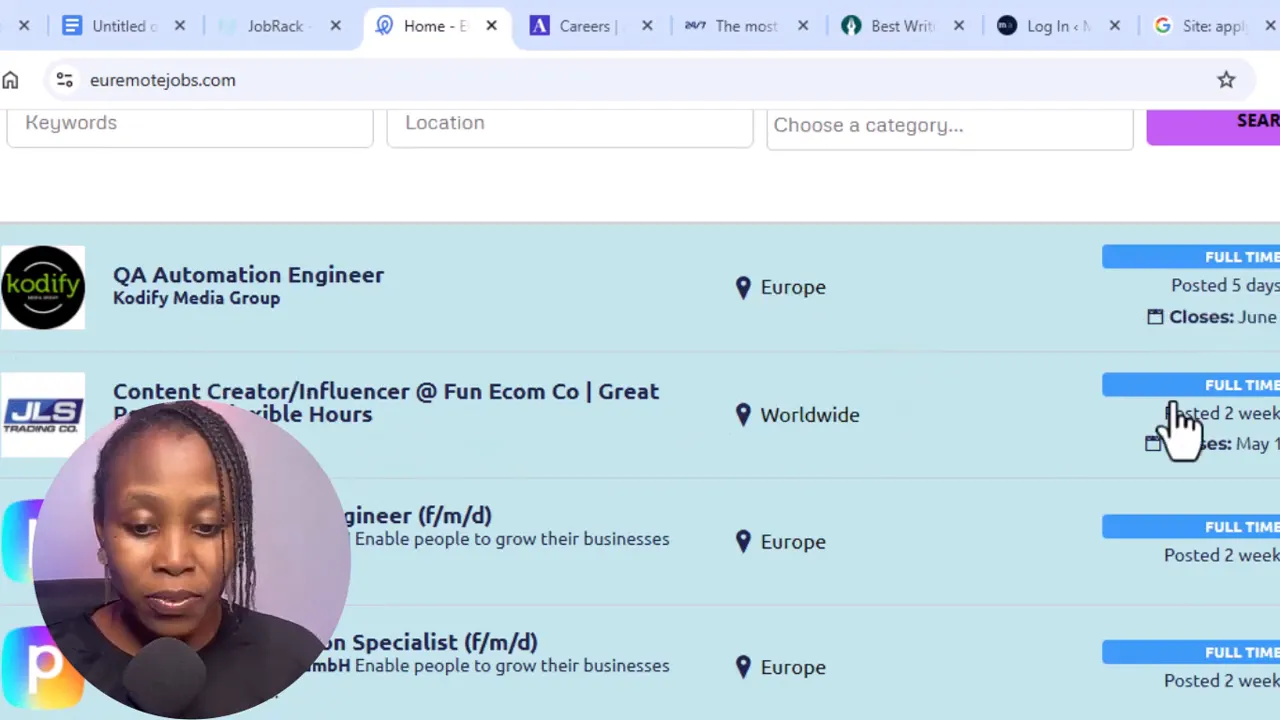
Exploring these platforms can give you a competitive edge and expose you to fresh opportunities that haven’t yet saturated the market.
The Most Important Step: Doing the Work
Here’s the truth that many job seekers overlook: no matter how much research you do or how many videos you watch on how to get a remote job, the most critical factor is actually applying.
Many people get stuck in preparation mode — perfecting their resume, building portfolios, watching tutorials, or searching for the “best” job boards. While these are useful steps, getting caught up in them without applying is a recipe for frustration.
The key is to develop a consistent system:
- Every day, apply to at least 10 remote jobs.
- Track your applications and follow up when necessary.
- Be ready to complete test tasks or interviews promptly.
- Learn from rejections and adjust your approach.
When I got my first remote job, I didn’t have a polished portfolio or a perfect resume. I had a CV and I put in the work by applying, completing tests, and showing up for interviews. The more you apply, the higher your chances of landing a remote job.
Don’t Let Perfection Delay Your Progress
It’s easy to fall into the trap of thinking you need everything perfect before applying. But the reality is, employers value action and willingness to learn just as much as technical skills.
If you feel your resume needs improvement, start by using templates or starter packs that can help you organize your information effectively. But don’t wait too long — start applying while you improve your documents.
How I Helped Myself and How You Can Help Yourself
To make the process easier, I created a Remote Job Starter Pack
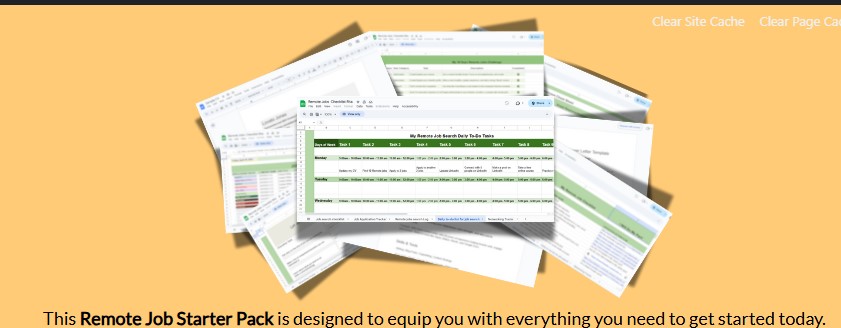
This remote job bundle includes:
- Templates for resumes and cover letters
- Pitching templates for reaching out to companies
- A job application tracker to organize your daily applications
- Guides on how to find remote jobs using the strategies I shared
This pack condenses everything you need to start applying effectively and consistently. If you already have some work samples, like articles on Medium or other platforms, include them to boost your portfolio.
Remember, landing a remote job is a numbers game. If you apply to enough jobs daily and keep refining your approach, you will get results — whether in one month, three months, or six months.
Final Encouragement: Take Action Now
If you’re serious about landing a remote job, let this be the last video or article you consume without taking action. After reading this, pick up your resume, download helpful templates, and start applying to at least 10 remote jobs today.
Whether you’re a content writer like me, a virtual assistant, a social media manager, or a video editor, these strategies work across niches. The combination of smart searching, targeting less competitive platforms, and consistent application is the winning formula.
And remember, you don’t need to be a coder or have advanced tech skills to work remotely. I’m living proof that with determination and the right approach, you can attract international clients and companies from anywhere in the world.
Summary: How to Get a Remote Job Using My Proven Strategies
- Use Google strategically: Search with specific keywords, explore company career pages, and use search operators to find ATS job listings.
- Avoid oversaturated job boards: Target niche and lesser-known remote job websites to reduce competition.
- Apply consistently: Set a daily goal to apply to multiple jobs and track your progress.
- Don’t wait for perfection: Use templates and starter packs to improve your resume and pitch while applying.
- Be proactive: Pitch companies directly if you don’t see open positions.
- Stay persistent: Keep refining your approach based on feedback and keep applying.
By following these steps, you can overcome the challenges of the remote job market and secure a job that fits your skills and lifestyle.
Connect and Engage
If you found this guide helpful, I encourage you to subscribe to my channel and join our free remote/freelance job community where I share more tips, resources, and support for job seekers like you.
Feel free to leave your questions or share your experiences in the comments section — I’m always excited to respond and help you succeed.
Remember, the journey to landing a remote job starts with one step. Take that step today!
